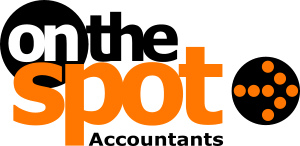2025 Tax Year End Planning

With the 2025 tax year ending in less than 50 days, do check what tax planning action you might take:
1. Frozen Allowances
With continued frozen tax allowances, more people are getting caught by a 40%, 60% or 45% tax rate.
As a business owner, you have more options than a regular employee, but it’s worth everyone checking in with what is available and affordable. Some sole traders work less to keep their profits under the 40% higher rate band of £50k or an employee may decide to go part time.
Shareholder-directors should review their mix of dividends-salary to ensure they are optimised. For example, if your company suffers the 26.5% marginal tax rate and some or all of the £5k national insurance employer annual allowance is available to you, you’re likely to find that a salary higher than £12,570 is more tax efficient for you.
A sole trader could add another person such as a spouse and set up a general partnership to even out the use of their income tax bands, or an employee might make more payments into a pension scheme, as described next.
2. Employer's National Insurance Increase
In the light of the increase in rate from 13.8% to 15% and lower starting point from £9,100 to £5,000 consider whether you need to change your shareholder-director dividends-salary mix from 6 April 2025.
Perhaps in the next tax year, you also need to approach employee remuneration differently. For example, bonus schemes might be replaced by a more tax efficient share option scheme or introduce a salary sacrifice scheme to be replace salary or bonuses with employer pension contributions.
3. Pensions
With higher corporation tax of 25%/26.5% for many company owners, you may wish to re-visit your company pension contributions to ensure you optimise your corporation tax relief.
With a March year end if your profits might be higher in the year to 31 March 2025 than in the year to 31 March 2026, you may find you’re likely to save more tax from making pension contributions in this earlier year, subject to the £60k annual allowance.
High sole trader or employee earners should always check they’re keeping taxable earnings under £100k wherever possible which might be achieved by paying more into your pension scheme from personal funds before 5 April 2025.
If your income is over £100k, you’ll save an extra 40% from gross pension contributions made to get income down in the range between £100k and £125k. Under £100k, you save an extra 20%, whereas for income over £125k, you save an extra 25%. Your pension pot receiving 20% direct from the government, boosting its value in the background.
4. State Pension Top Up
The deadline to top up your state pension for years from 6 April 2006 is 5 April 2025. From 6 April 2025 this is being reduced to 6 years.
Therefore check your Personal Tax Account, which despite its name also shows your state pension years. You can identify any missing years, any errors and check whether it’s worth making the payments.
State pension credit years can arise from a variety of sources, but if you need to make the most expensive Class 3 national insurance payment, it costs £907 to add on a missing year, but it might be less if you were self employed.
5. Spouse Dividends
Dividend tax is at its highest level and as dividends also form part of your gross income trapped within the frozen allowances mentioned above, you may ask your spouse to take on some shareholder responsibilities and receive some dividends to use their basic rate tax bands or to keep your income under £100k.
6. Annual Investment Allowance and Electric Car First Year Allowance - 100%
For all businesses, sole traders and limited companies, the Annual Investment Allowance rewards investment of up to £1m on plant and equipment or eligible commercial property refurbishment with 100% tax relief. Similarly, new electric cars purchased benefit from 100% tax relief with no limit.
If you plan to incur these costs near to your year end, such as 31 March 2025, ensure you meet the conditions for a claim in this year, so you don’t have to wait a year to get the cashflow tax saving.
For example, investing £100k might save £25k of corporation tax (25%), or £45k of income tax (45%) which is better in your pocket one year earlier than with HMRC.
Remember hire purchase contracts work, so you don’t need to have bought the assets outright to get full tax relief, assuming the hire purchase contract is good value overall.
7. Double Cab Pick Ups
Before the IHT changes in April 2026, the earliest tax change upsetting farmers and others is the expensive tax changes to double cab pick ups taxing them like 'normal' cars from 6 April 2025. This means that capital allowances and taxable benefits in kind will be based on CO2 emissions.
Purchase, lease, order your new or 2nd hand DCPU by 5 April 2025 to continue to enjoy the current rules or replace your current one after 5 April 2025 with a single cab pick up or other commercial vehicle.
8. Entrepreneurs Relief (BADR)
If you're in the middle of a sale or liquidation of your business eligible for 10% BADR ensure you exchange or receive your liquidation distribution by 5 April 2025 so you don't pay the higher 14% coming in from 6 April 2025.
9. Director Small Wins
Remember to maximise your director treats for the tax year ended 5 April 2025; trivial benefits under £50 each, totalling an annual £300 each, annual parties expenditure up to £300 each including guest or have a private health care check.
Each taxpayer is different and you should only act after being advised about all the financial impacts of your actions.
